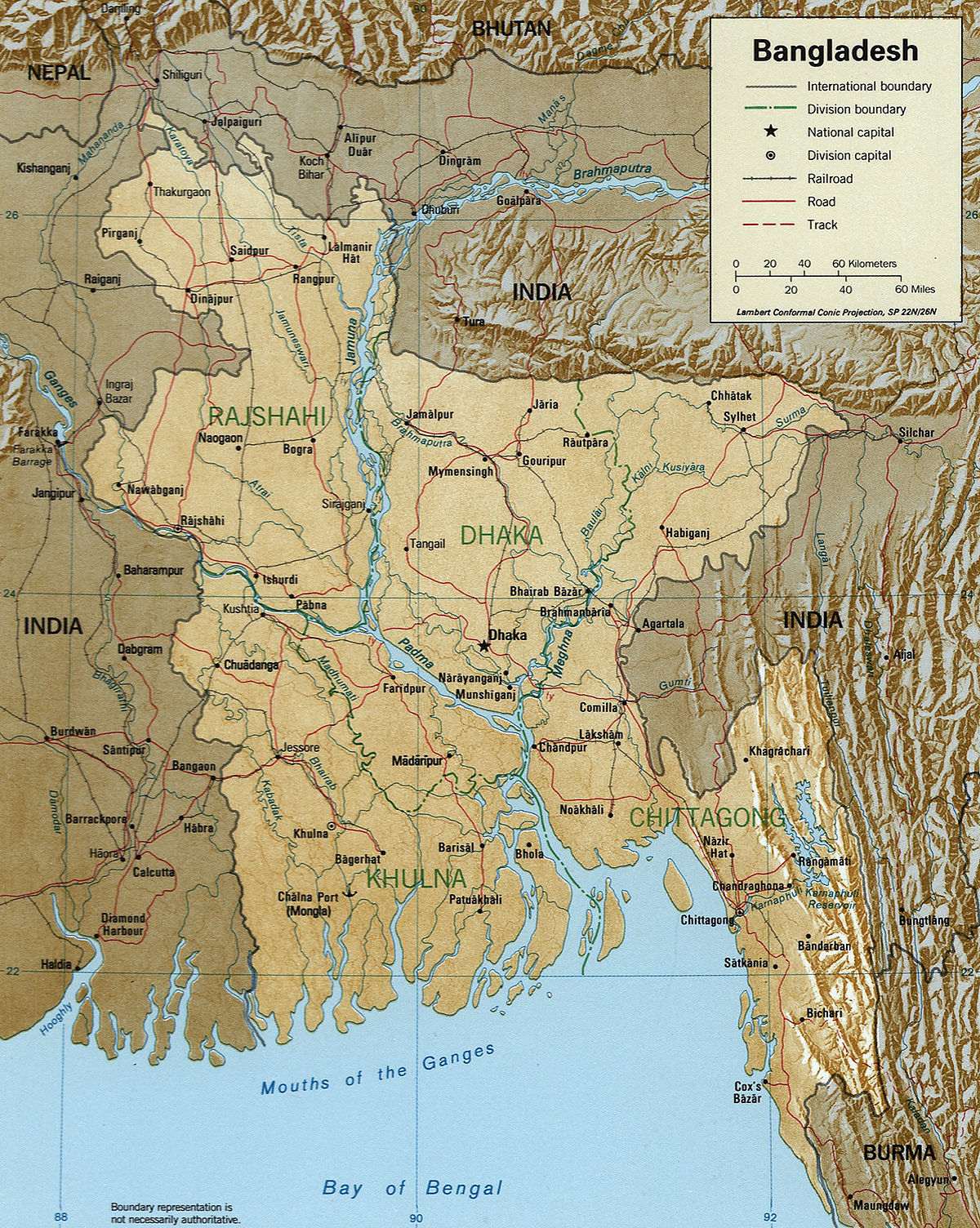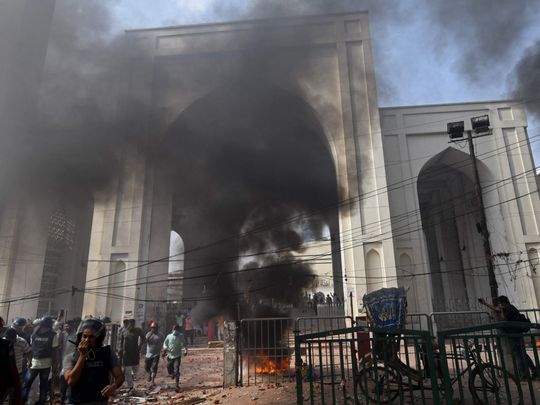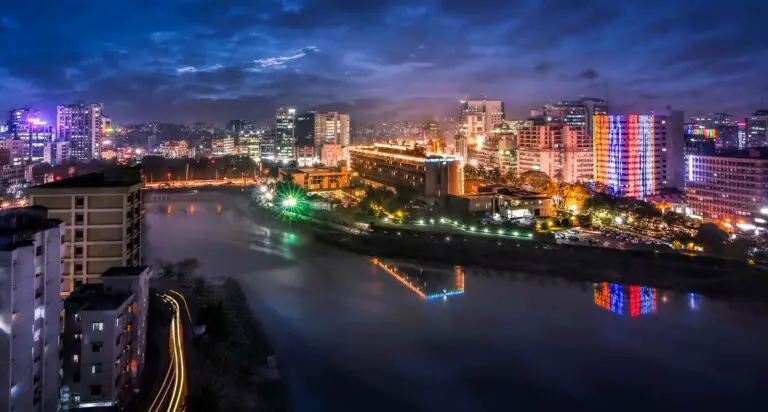Bangladesh is a Land of River Paragraph
Bangladesh is a land of rivers. There are more than 700 rivers in Bangladesh, which provide the country with water for drinking, irrigation and transportation. The major rivers of Bangladesh are the Ganges, Brahmaputra and Meghna.
These three great rivers flow through the country from north to south and empty into the Bay of Bengal.
Bangladesh, a land of rivers, is located in South Asia and is bordered by India to the east, west and north, and Burma to the southeast. The country has an area of 147,570 square kilometers (56,980 sq mi) and a population of over 168 million people, making it one of the most densely populated countries in the world. Bangladesh is the seventh-largest country in South Asia and the twelfth-largest in the world.
The capital city is Dhaka.
The major river systems of Bangladesh are: The Ganges Brahmaputra Meghna system; The Jamuna River; The Padma River; And other smaller rivers such as Arial Khan, Madhumati River, Karnaphuli River etc.
Out of these four river systems, 56% of the surface water available for use comes from the Ganges Brahmaputra Meghna system while 22% come from Jamuna River , 16% from Padma River and 6% from other small rivers .
With so much water around it’s no wonder that fishing is such an important part of life here with almost 4 million people deriving their livelihoods from this sector . Not only does this provide food for them but also plays a vital role in export earnings .
The problem however is that due to its geographical location , Bangladeshis are very vulnerable to floods which often wreak havoc on crops , homes and lives .
In fact every year almost 20%of Bangladesh’s land area gets flooded during monsoon season . And if we include cyclones then this figure goes up to 40%. Climate change is likely to make this situation even worse in future with rising sea levels leading to increased flooding .
What is Bangladesh
Bangladesh is a country located in southern Asia. The official name of the country is the People’s Republic of Bangladesh. It shares borders with India and Myanmar.
The capital city of Bangladesh is Dhaka. The currency is the taka.
The total land area of Bangladesh is 147,570 square kilometers.
The population of Bangladesh was estimated to be 168 million in 2019. Bengali is the official language of Bangladesh. Islam is the main religion practiced in the country.
Bangladesh has a tropical monsoon climate with three main seasons- summer, monsoon, and winter. Summer runs from March to June and is characterized by high temperatures and humidity levels. The monsoon season runs from July to October and brings heavy rains to the country which can often cause flooding.
Winter lasts from November to February and temperatures during this time are relatively cool compared to summer months.
The economy of Bangladesh relies heavily on agriculture as around 60% of the labor force is employed in this sector.
What are the Main Rivers in Bangladesh
There are seven main rivers in Bangladesh – the Ganges, the Brahmaputra, the Meghna, the Karnaphuli, the Feni, the Teesta and the Padma. The Ganges is by far the largest river, with a length of 2,525km. It originates in India and flows through Bangladesh before emptying into the Bay of Bengal.
The Brahmaputra is also a major river, originating in Tibet and flowing through India and Bangladesh to eventually meet up with the Ganges. Together these two rivers form one of the world’s largest delta systems. Other significant rivers in Bangladesh include:
-The Meghna – 1,485km
-The Karnaphuli – 464km
-The Feni – 484km
-The Teesta – 425km
Why are These Rivers Important to the Country
The United States has a wide variety of rivers that play an important role in the country. Here are just a few examples:
The Mississippi River is one of the longest rivers in the world, and it runs through 10 states in the US.
It’s an important waterway for transportation and commerce, as well as providing drinking water for millions of people.
The Colorado River is another long river that runs through 7 US states. It’s an important source of irrigation water for farmers, as well as supplying drinking water to cities like Los Angeles and Las Vegas.
The Colorado River is also a popular destination for recreation, such as boating, fishing, and hiking.
The Hudson River is a shorter river that flows through New York State. It’s an important economic engine for the state, with many major cities located along its banks.
The Hudson River is also a popular destination for recreation, such as boating, fishing, and swimming.
How Do the People of Bangladesh Use These Rivers
The people of Bangladesh use these rivers for many purposes, including transportation, irrigation, drinking water, and sanitation. More than half of the country’s population lives in rural areas and depends on these rivers for their livelihoods.
Transportation is perhaps the most important way that the people of Bangladesh use these rivers.
The country has a very large inland waterway network, and boats are the primary mode of transport for both passengers and freight. Irrigation is also vitally important to the country, as agriculture is the mainstay of the economy. In fact, nearly 80% of cultivated land in Bangladesh is irrigated by river water.
Drinking water is another vital use of these rivers in Bangladesh. Due to contamination from industrial and agricultural runoff, surface water is not safe to drink without treatment. However, groundwater aquifers are often contaminated as well, so many people rely on rainwater harvesting or deep wells for their drinking water needs.
Sanitation is also an important issue in Bangladesh, as poor sanitation can lead to dangerous diseases like cholera. In rural areas, latrines are often built over waterways so that waste can be quickly flushed away. In urban areas, sewage treatment plants help to protect against contamination of river water supplies.
Rivers of Bangladesh Composition | Importance of Rivers in Bangladesh Composition | Essay on Rivers
Dying Rivers of Bangladesh Paragraph Hsc
In Bangladesh, the rivers are dying. The country has more than 700 rivers, but many of them are now so polluted that they can no longer support life. The problem is particularly severe in the capital city of Dhaka, where the population has quadrupled in the last 40 years.
As a result of all the pollution, Bangladesh now ranks as one of the most water-stressed countries in the world.
The main culprit behind the pollution of Bangladesh’s rivers is its rapidly growing textile industry. The country has become a leading exporter of clothing in recent years, and the factories that produce these garments often discharge their wastewater directly into local waterways.
This wastewater is full of toxic chemicals and dyes that can kill fish and other aquatic creatures. It also makes it difficult for people who rely on these rivers for drinking water to access clean water.
The government of Bangladesh has been trying to address this problem by establishing treatment plants to remove pollutants from factory wastewater before it is discharged into rivers.
However, these plants are not yet operational, and in the meantime, the pollution continues unabated.
Conclusion
The People’s Republic of Bangladesh is a country located in South Asia. It is bordered by India to the west and north, Burma to the east, and Nepal and Bhutan to the southeast. The capital city is Dhaka.
The official languages are Bengali and English. The currency is the Taka (BDT).
Bangladesh is a land of river.
There are about 700 rivers flowing through Bangladesh which covers an area of 1,47,570 sq km making it one of the most densely populated countries in the world with a population of over 160 million people. Bangladesh has many unique geographical features including its long coastline, flat alluvial plains created by deposits from rivers, hilly regions in the northeast and southeast, and forests in the Chittagong Hill Tracts.
The climate in Bangladesh is tropical with monsoonal influences.
The country experiences three seasons: summer (March-May), monsoon/rainy season (June-September), and winter (October-February). Temperatures range from maximums of 37 degrees Celsius in April-May to minimums of 10 degrees Celsius in December-January. Annual rainfall varies from 1,600 mm in Sylhet to 4,000 mm in Chittagong Hill Tracts with an average nationwide of 2,200 mm.







